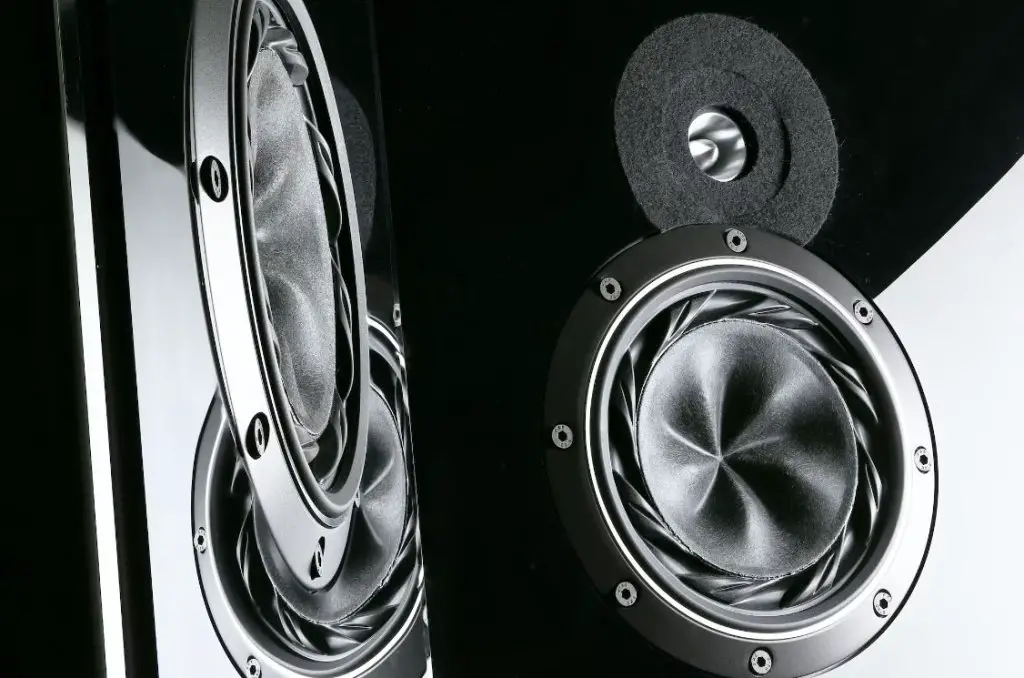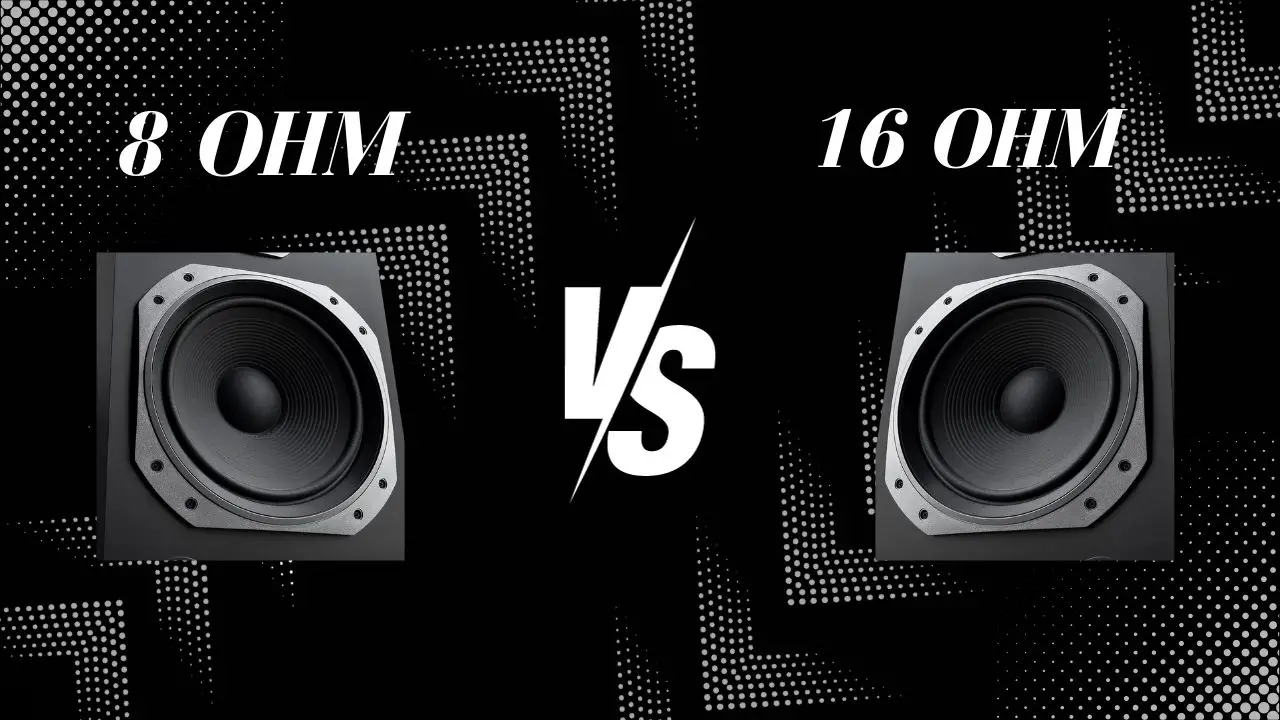This product list contains affiliate links. This means that at no extra cost to you, I may earn a commission if you use one of these links to make a purchase.
Last updated on October 3rd, 2023 at 08:19 am
Before we examine the differences between these two impedance ratings and their impact on audio systems, we must first understand what impedance is and how it relates to speaker performance. By grasping the basics of impedance, we can make informed decisions when selecting speaker ohm ratings for our audio equipment.
Key Takeaways
- 📚 Learn about Speaker Impedance: Understanding the basics of speaker ohm rating is crucial for optimal audio performance, which can significantly impact the audio system’s performance.
- 🔌 Match Impedance with Amplifier: Both the speaker and amplifier should have the same ohm rating for the best audio quality. If unsure about the amplifier’s output impedance, refer to the user manual or consult the manufacturer.
- 🎵 8 Ohm vs. 16 Ohm: 8 ohm speakers are popular due to their energy efficiency, but may have limited low-frequency response compared to 16 ohm speakers. 16 ohm speakers offer improved clarity and precise sound, albeit with potential compatibility issues with amplifiers.
- 🔄 Check Amplifier Compatibility: Double check amplifier-speak compatibility to avoid damaging your equipment. If your amplifier is designed for a specific ohm rating, using speakers with a different ohm rating could affect the sound quality or cause damage.
- 👂Tailor Your Audio Experience: Your personal audio preferences should guide your speaker choice. For a warmer, more natural sound, opt for 8 ohm speakers. If you prefer a louder, more powerful sound, 16 ohm speakers may be more suitable.
Understanding 8 Ohm vs 16 Ohm Impedance: The Basics

Impedance is the electrical resistance of a speaker to the audio signal sent to it. A common measure of impedance is ohms, with most speakers having ratings of 4, 8, or 16 ohms.
Choosing the right speaker ohm rating is vital for optimal audio performance. The general rule of thumb is to match the speaker ohm rating to the amplifier’s output impedance. In other words, if the amplifier output impedance is 8 ohms, choose a speaker with an 8 ohm rating.
Pro-tip: If you are unsure what your amplifier output impedance is, consult the owner’s manual or contact the manufacturer for clarification.
Another essential aspect of speaker ohm selection is compatibility with your audio equipment. It’s crucial to choose speakers that match the overall system impedance to avoid damaging your equipment or poor audio quality.
Pro-tip: Consider seeking advice from audio experts or consulting online forums to ensure you select the right speaker ohm rating for your audio setup.
Also Read: Drum Booth Size: Understanding Dimensions and Choosing the Right Fit for Your Space
8 Ohm: Unveiling the Performance
When it comes to speaker ohm ratings, 8 ohm is a popular choice among audio enthusiasts. This impedance rating is commonly found in home theater systems, bookshelf speakers, and studio monitors.
But what makes 8 ohm speakers stand out from the crowd? For one, they are more efficient than their 16 ohm counterparts, requiring less power to achieve the same volume level. This makes them a great choice if you’re looking to conserve energy or have a limited power supply.
However, there are some limitations to consider when choosing 8 ohm speakers. They may not be compatible with all amplifiers, as some amps have a minimum load ohm requirement.
Additionally, they may not produce the same level of low-frequency response as 16 ohm speakers, which could impact the overall sound quality of your audio system.
When selecting 8 ohm speakers for your setup, it’s essential to consider the capabilities of your amplifier and the specific audio needs you have.
If you have a low-powered amplifier, 8 ohm speakers may be a better choice as they require less power to operate. However, if you’re looking for deeper bass response, you may want to consider 16 ohm speakers instead.
16 Ohm: Unleashing the Power
Another common speaker impedance rating is 16 ohm. While 8 ohm is more prevalent, there are several advantages to choosing 16 ohm speakers for your audio system.
Firstly, 16 ohm speakers typically have a higher sensitivity rating than their 8 ohm counterparts. This means they require less power to achieve the same volume levels, making them an excellent choice for low-powered amplifiers or situations where you want to conserve energy.
Additionally, 16 ohm speakers can offer improved clarity and detail in the midrange frequencies. This is due to the fact that higher impedance helps to reduce the effects of voice coil inductance on the speaker’s performance, resulting in a cleaner and more precise sound.
However, there are some downsides to 16 ohm speakers as well. They may not be compatible with all amplifiers, especially those designed to work with 8 ohm loads. Furthermore, they may not produce the same bass response as 8 ohm speakers, particularly when used with lower-powered amplifiers.
When considering 16 ohm speakers, it’s essential to keep in mind the compatibility and power requirements of your audio system, as well as your personal preferences regarding sound quality.
Also Read: Fingers Bleeding from Guitar: Why It’s Not a Badge of Honor
Impedance Matching: Amplifier Compatibility

When it comes to speaker performance, impedance matching is crucial. Amplifiers are designed to work with specific load impedances, and if the speaker impedance is too high or too low, it can result in loss of power or damage to the amplifier.
One important factor to consider is the speaker load ohm, which refers to the total impedance of all the speakers connected to the amplifier. Matching the load ohm to the amplifier’s specifications ensures that the amplifier can deliver the maximum power to the speakers while preventing overheating or overloading.
Another consideration is amplifier ohm compatibility, which refers to the minimum and maximum ohm rating that the amplifier can handle. For example, an amplifier with a minimum ohm rating of 4 ohms is not suitable for 8 ohm speakers, as it may cause damage to the amplifier.
It’s important to note that while speakers with higher ohm ratings may appear safer for amplifiers, they may require more power to achieve the same volume levels as lower ohm speakers. Therefore, selecting the right speaker impedance rating is crucial for finding the ideal balance between performance and safety.
Also Read: What is Twinning on Guitar: Discover the Musical Technique
Finding the Right Fit: Choosing the Ideal Impedance
Now that we have a clear understanding of the differences between 8 ohm and 16 ohm speakers, it’s time to discuss how to choose the right speaker ohm rating for your audio system. Several factors come into play when selecting the ideal impedance for your setup.
The first thing to consider is your amplifier’s specifications. It’s essential to ensure that your amplifier can handle the speaker ohm rating that you choose.
For instance, if your amplifier is rated for 8 ohms and you connect a 16 ohm speaker to it, you’re likely to experience a significant loss in power and sound quality. Therefore, it’s crucial to match the amplifier’s ohm rating with that of your speakers.
Speaker compatibility is another crucial factor to consider. Not all speakers can handle all types of amplifiers, and not all amplifiers are compatible with all speakers.
You need to check the specifications for both your amplifier and speakers and ensure that they are compatible with each other. This will help you avoid any issues with sound quality or even damage to your equipment.
Lastly, consider the overall audio experience you desire. If you prefer a warmer and more natural sound, 8 ohm speakers may be the better option. However, if you prefer a louder and more powerful sound, 16 ohm speakers may be more suitable for your setup.
Overall, choosing the right speaker ohm rating can significantly impact the performance of your audio system. By considering factors like amplifier specifications, speaker compatibility, and your desired audio experience, you can make an informed decision that suits your needs and enhances your listening pleasure.
Conclusion
As we’ve discovered, the difference between 8 ohm and 16 ohm speakers can have a significant impact on the performance of your audio system.
By understanding the basics of impedance and the pros and cons of each rating, we can make informed decisions when selecting speakers for our setup. It’s essential to ensure that your speaker ohm rating matches your amplifier’s requirements to prevent impedance mismatch and maximize sound quality.
By doing so, you can avoid damaging your equipment and enjoy a smoother, more balanced audio experience.
When it comes to choosing the ideal impedance rating for your speakers, consider factors such as amplifier specifications, compatibility, and the overall audio experience you desire.
Whether you opt for 8 ohm or 16 ohm speakers, ensure that you carefully evaluate their benefits and limitations to achieve the best possible audio quality. In conclusion, mastering the nuances of speaker impedance can take your audio experience to the next level.
By selecting the right speaker ohm rating and ensuring that it’s correctly matched with your amplifier, you can optimize performance, enhance the sound quality, and enjoy a truly immersive audio experience that’s tailored to your preferences.


